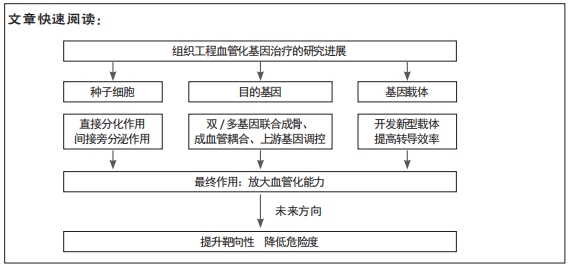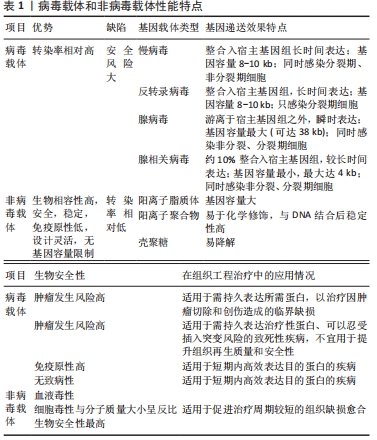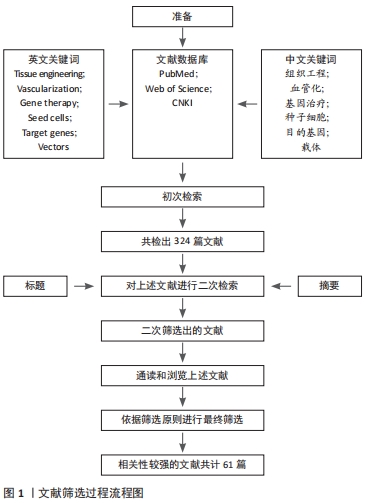[1] 俞舒舒,王彦林.先天性心脏病与新型环境因素相关性研究进展[J].中国计划生育学杂志,2019,27(6):823-826.
[2] 陆铖,王江玥,贾仲林.影响非综合征型唇腭裂的环境因素[J].华西口腔医学杂志,2019,37(5):547-550.
[3] 林恒娜,顾秀瑛,张思维,等.全球恶性肿瘤发病年龄分析[J].中华肿瘤杂志,2018,40(7):543-549.
[4] SHAPIRO G, LIEBER R, GAZIT D, et al. Recent Advances and Future of Gene Therapy for Bone Regeneration. Curr Osteoporos Rep. 2018; 16(4):504-511.
[5] BORRELLI MR, HU MS, LONGAKER MT, et al. Tissue Engineering and Regenerative Medicine in Craniofacial Reconstruction and Facial Aesthetics. J Craniofac Surg. 2020;31(1):15-27.
[6] SMITH BT, SHUM J, WONG M, et al. Bone Tissue Engineering Challenges in Oral & Maxillofacial Surgery. Adv Exp Med Biol. 2015;881:57-78.
[7] BHUMIRATANA S, BERNHARD JC, ALFI DM, et al. Tissue-engineered autologous grafts for facial bone reconstruction. Sci Transl Med. 2016; 8(343):343r-383r.
[8] RADEMAKERS T, HORVATH JM, VAN BLITTERSWIJK CA, et al. Oxygen and nutrient delivery in tissue engineering: Approaches to graft vascularization. J Tissue Eng Regen Med. 2019;13(10):1815-1829.
[9] SHARMA D, ROSS D, WANG G, et al. Upgrading prevascularization in tissue engineering: A review of strategies for promoting highly organized microvascular network formation. Acta Biomater. 2019;95: 112-130.
[10] LIN Y, HUANG S, ZOU R, et al. Calcium phosphate cement scaffold with stem cell co-culture and prevascularization for dental and craniofacial bone tissue engineering. Dent Mater. 2019;35(7):1031-1041.
[11] WANG L, SHI Q, CAI Y, et al. Mechanical-chemical coupled modeling of bone regeneration within a biodegradable polymer scaffold loaded with VEGF. Biomech Model Mechanobiol. 2020;19(6):2285-2306.
[12] QUINLAN E, LOPEZ-NORIEGA A, THOMPSON EM, et al. Controlled release of vascular endothelial growth factor from spray-dried alginate microparticles in collagen-hydroxyapatite scaffolds for promoting vascularization and bone repair. J Tissue Eng Regen Med. 2017;11(4):1097-1109.
[13] YIN S, ZHANG W, ZHANG Z, et al. Recent Advances in Scaffold Design and Material for Vascularized Tissue-Engineered Bone Regeneration. Adv Healthc Mater. 2019;8(10):e1801433.
[14] Mitchell AC, Briquez PS, Hubbell JA, et al. Engineering growth factors for regenerative medicine applications. Acta Biomater. 2016;30:1-12.
[15] BETZ VM, KOCHANEK S, RAMMELT S, et al. Recent advances in gene-enhanced bone tissue engineering. J Gene Med. 2018;20(6):e3018.
[16] HASSANZADEH P, ATYABI F, DINARVAND R. Tissue engineering: Still facing a long way ahead. J Control Release. 2018;279:181-197.
[17] ATASOY-ZEYBEK A, KOSE GT. Gene Therapy Strategies in Bone Tissue Engineering and Current Clinical Applications. Adv Exp Med Biol. 2018; 1119:85-101.
[18] LEE HL, LEE HY, YUN Y, et al. Hypoxia-specific, VEGF-expressing neural stem cell therapy for safe and effective treatment of neuropathic pain. J Control Release. 2016;226:21-34.
[19] 张志翔,徐恋祎.基因治疗用于骨组织工程的研究进展[J].临床口腔医学杂志,2020,36(3):180-184.
[20] ZHA Y, LI Y, LIN T, et al. Progenitor cell-derived exosomes endowed with VEGF plasmids enhance osteogenic induction and vascular remodeling in large segmental bone defects. Theranostics. 2021;11(1):397-409.
[21] WANG J, CHEN Z, SUN M, et al. Characterization and therapeutic applications of mesenchymal stem cells for regenerative medicine. Tissue Cell. 2020;64:101330.
[22] TROHATOU O, ROUBELAKIS MG. Mesenchymal Stem/Stromal Cells in Regenerative Medicine: Past, Present, and Future. Cell Reprogram. 2017;19(4):217-224.
[23] XIE Q, LIU R, JIANG J, et al. What is the impact of human umbilical cord mesenchymal stem cell transplantation on clinical treatment? Stem Cell Res Ther. 2020;11(1):519.
[24] GARCIA-VAZQUEZ MD, HERRERO DLPB, GARCIA-ALONSO I, et al. Analysis of Biological Properties of Human Adult Mesenchymal Stem Cells and Their Effect on Mouse Hind Limb Ischemia. J Vasc Res. 2019; 56(2):77-91.
[25] TAN S, TJIO C, WONG J, et al. Mesenchymal Stem Cell Exosomes for Cartilage Regeneration: A Systematic Review of Preclinical In Vivo Studies. Tissue Eng Part B Rev. 2021;27(1):1-13.
[26] NOWAKOWSKI A, WALCZAK P, JANOWSKI M, et al. Genetic Engineering of Mesenchymal Stem Cells for Regenerative Medicine. Stem Cells Dev. 2015;24(19):2219-2242.
[27] HUANG ZW, LIU N, LI D, et al. Angiopoietin-1 Modified Human Umbilical Cord Mesenchymal Stem Cell Therapy for Endotoxin-Induced Acute Lung Injury in Rats. Yonsei Med J. 2017;58(1):206-216.
[28] ZHU Y, YI Y, YANG S, et al. Construction of injectable tissue engineered adipose tissue with fibrin glue scaffold and human adipose-derived stem cells transfected by lentivirus vector expressing hepatocyte growth factor. Zhongguo Xiu Fu Chong Jian Wai Ke Za Zhi. 2017;31(9): 1111-1118.
[29] 蒋星海,赵彪,吴凯,等.血管内皮生长因子165、神经营养因子3、血管生成素1基因转染诱导骨髓间充质干细胞向神经元及血管内皮细胞分化[J].中国组织工程研究,2018,22(25):3956-3962.
[30] ZHANG F, PENG WX, WANG L, et al. Role of FGF-2 Transfected Bone Marrow Mesenchymal Stem Cells in Engineered Bone Tissue for Repair of Avascular Necrosis of Femoral Head in Rabbits. Cell Physiol Biochem. 2018;48(2):773-784.
[31] 陈波,郭祥,张寿,等.转染BMP-2基因的骨髓MSC复合多孔磷酸钙骨水泥构建组织工程化骨对兔骨缺损的修复作用研究[J].临床和实验医学杂志,2019,18(17):1815-1818.
[32] KRUGER-GENGE A, BLOCKI A, FRANKE RP, et al. Vascular Endothelial Cell Biology: An Update. Int J Mol Sci. 2019;20(18):4411.
[33] 明华伟,何芸,夏德林,等. VEGF 165基因转染HUVEC促进大鼠血管生成的实验研究[J].口腔颌面外科杂志,2017,27(3):161-165.
[34] PETERS EB. Endothelial Progenitor Cells for the Vascularization of Engineered Tissues. Tissue Eng Part B Rev. 2018;24(1):1-24.
[35] 王娟.VEGF基因修饰的内皮祖细胞治疗脑梗死的疗效和机制的实验研究[D].长春:吉林大学,2016.
[36] 薛建新,秦志强,李潇,等.VEGF_(165)转染内皮祖细胞移植对大鼠肾脏缺血再灌注的保护作用[J]. 南京医科大学学报(自然科学版),2018,38(1):34-39.
[37] 汪砚雨.VEGF165基因转染血管内皮祖细胞治疗心肌缺血再灌注损伤的实验研究[D].郑州:郑州大学,2018.
[38] 李建君.VEGF-Ax对大鼠骨髓间充质干细胞成血管分化的调节作用及其促血管生成能力的研究[D]. 广州:南方医科大学,2020.
[39] ALMUBARAK S, NETHERCOTT H, FREEBERG M, et al. Tissue engineering strategies for promoting vascularized bone regeneration. Bone. 2016; 83:197-209.
[40] CAPORARELLO N, D’ANGELI F, CAMBRIA MT, et al. Pericytes in Microvessels: From “Mural” Function to Brain and Retina Regeneration. Int J Mol Sci. 2019;20(24):6351.
[41] 余艳妮.装载经RGD修饰的VEGF165和Ang-1双基因共表达腺病毒载体的丝素多孔支架及其促血管化作用[D].苏州:苏州大学, 2015.
[42] LI B, WANG H, QIU G, et al. Synergistic Effects of Vascular Endothelial Growth Factor on Bone Morphogenetic Proteins Induced Bone Formation In Vivo: Influencing Factors and Future Research Directions. Biomed Res Int. 2016;2016:2869572.
[43] LEE E, KO JY, KIM J, et al. Osteogenesis and angiogenesis are simultaneously enhanced in BMP2-/VEGF-transfected adipose stem cells through activation of the YAP/TAZ signaling pathway. Biomater Sci. 2019;7(11):4588-4602.
[44] EST-WITTE SE, FARRIS AL, TZENG SY, et al. Non-viral gene delivery of HIF-1alpha promotes angiogenesis in human adipose-derived stem cells. Acta Biomater. 2020;113:279-288.
[45] YING C, WANG R, WANG Z, et al. BMSC-Exosomes Carry Mutant HIF-1alpha for Improving Angiogenesis and Osteogenesis in Critical-Sized Calvarial Defects. Front Bioeng Biotechnol. 2020;8:565561.
[46] PENG WX, WANG L. Adenovirus-Mediated Expression of BMP-2 and BFGF in Bone Marrow Mesenchymal Stem Cells Combined with Demineralized Bone Matrix For Repair of Femoral Head Osteonecrosis in Beagle Dogs. Cell Physiol Biochem. 2017;43(4):1648-1662.
[47] MAO Y, LIU X Q, SONG Y, et al. Fibroblast growth factor-2/platelet-derived growth factor enhances atherosclerotic plaque stability. J Cell Mol Med. 2020;24(1):1128-1140.
[48] VIJAYAN A, A S, KUMAR GSV. PEG grafted chitosan scaffold for dual growth factor delivery for enhanced wound healing. Sci Rep. 2019;9(1): 19165.
[49] LUKASHEV AN, ZAMYATNIN AJ. Viral Vectors for Gene Therapy: Current State and Clinical Perspectives. Biochemistry (Mosc). 2016;81(7):700-708.
[50] DAVID RM, DOHERTY AT. Viral Vectors: The Road to Reducing Genotoxicity. Toxicol Sci. 2017;155(2):315-325.
[51] PATIL S, GAO YG, LIN X, et al. The Development of Functional Non-Viral Vectors for Gene Delivery. Int J Mol Sci. 2019;20(21):5491.
[52] KIM J, MIRANDO AC, POPEL AS, et al. Gene delivery nanoparticles to modulate angiogenesis. Adv Drug Deliv Rev. 2017;119:20-43.
[53] QADIR A, GAO Y, SURYAJI P, et al. Non-Viral Delivery System and Targeted Bone Disease Therapy. Int J Mol Sci. 2019;20(3):565.
[54] RAFTERY RM, MENCIA CI, CHEN G, et al. Translating the role of osteogenic-angiogenic coupling in bone formation: Highly efficient chitosan-pDNA activated scaffolds can accelerate bone regeneration in critical-sized bone defects. Biomaterials. 2017;149:116-127.
[55] POURLAK T, POURLAK T, GHODRATI M, et al. Usage of stem cells in oral and maxillofacial region. J Stomatol Oral Maxillofac Surg. 2020:S2468-7855(20)30235-4.
[56] 秦宇星,任前贵,沈佩锋.组织工程骨技术治疗骨缺损的优越性[J].中国组织工程研究,2020,24(24):3877-3882.
[57] TIRPE AA, GULEI D, CIORTEA SM, et al. Hypoxia: Overview on Hypoxia-Mediated Mechanisms with a Focus on the Role of HIF Genes. Int J Mol Sci. 2019;20(24):6140.
[58] OMORPHOS NP, GAO C, TAN SS, et al. Understanding angiogenesis and the role of angiogenic growth factors in the vascularisation of engineered tissues. Mol Biol Rep. 2021;48(1):941-950.
[59] BAI Y, BAI L, ZHOU J, et al. Sequential delivery of VEGF, FGF-2 and PDGF from the polymeric system enhance HUVECs angiogenesis in vitro and CAM angiogenesis. Cell Immunol. 2018;323:19-32.
[60] 曹俊霞,王友亮,王征旭.精准调控CRISPR/Cas9基因编辑技术研究进展[J].遗传,2020,42(12):1168-1177.
[61] 公少华,李娜,唐波.调控CRISPR-Cas9系统用于基因编辑的研究进展[J].化学学报,2020,78(7):634-641.
|


